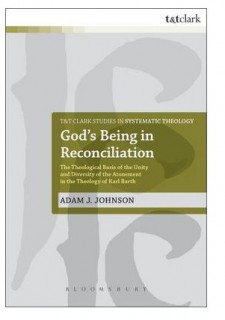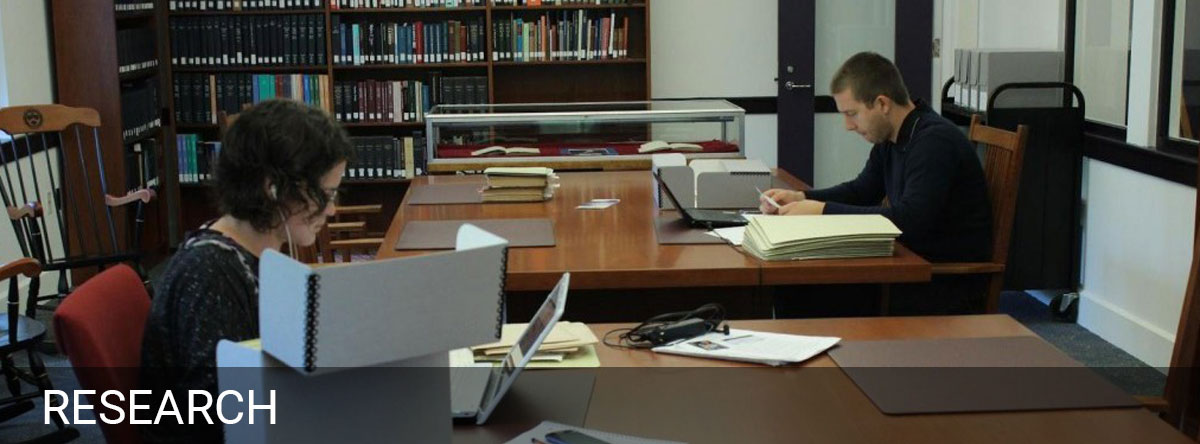 Johnson, Adam J., God’s Being in Reconciliation: The Theological Basis of the Unity and Diversity of the Atonement in the Theology of Karl Barth, (London: T & T Clark, 2012), x + 220pp. $120.00 ($34.95, paperback)
Johnson, Adam J., God’s Being in Reconciliation: The Theological Basis of the Unity and Diversity of the Atonement in the Theology of Karl Barth, (London: T & T Clark, 2012), x + 220pp. $120.00 ($34.95, paperback)
Reviewed by Scott Rice (January 02, 2014)
If the thought of Karl Barth continues to be appropriated as a theological resource in the English speaking context in years to come, it will be due to the impact of constructive works like this one. In God’s Being in Reconciliation, Adam Johnson (now assistant professor of theology at Biola University) deploys a creative perspective on Barth’s theology that unites scripture’s diverse expressions of Christ’s saving work by way of the doctrine of God. While much current discourse on atonement approaches the subject noting either the plethora of metaphors or cultural variations that might make up a coherent framework, Johnson’s argument, in an improvisation on 2 Cor. 5.19, turns to “the God who was in Christ accomplishing atonement” (5–9). His treatment of Barth results is a refreshing look at how scripture’s diverse ways of speaking about the atonement might be unified by attending to their ultimate ground in the unity-in-diversity of the perfections of God’s triune being.Johnson sets the stage in chapter two by laying out the central features of Barth’s being-in-act ontology and its relation to his doctrine of election. Familiar to most Barth readers, Johnson makes the claim that God’s being is one with his acts of self-manifestation (32), and that this self-manifestation centers upon the person of Jesus Christ (40, 43). In chapter three, Johnson turns to Barth on the Trinity. Two points from this chapter stand out: first, Johnson focusses on the full presence of God in Jesus which results from the divine unity; and second, he highlights how Barth’s use of traditional concepts and maxims for the divine distinctions—like perichoresis andopera trinitatis ad extra sunt indivisa—underscore the dynamic relation of God’s unity-in-diversity. For example, the divine distinctions provide an antecedent basis for God to assume and reconcile the other-ness which is sinful humanity without ontological separation (67, 70, 83). With this treatment of God’s being-in-act, the christological center of God’s self-manifestation and the Trinitarian distinctions in place, Johnson moves on to explicate the connection in Barth’s thought between the divine perfections and the atonement.
Chapter four lies at the heart of Johnson’s argument. In the first half of the chapter, he develops Barth’s inclusion of the divine perfections within the doctrine of the Trinity to unearth its implications for atonement. The result: “the perfections of God’s one being bear the impression of that triunity,” a formal “unity in diversity” pattern in which each perfection belongs wholly and equally to each of the three eternal modes of God’s being (99–100). While each perfection evinces the entirety of God’s essence, the perfections, corresponding with the traditional concept of perichoresis and the opera ad extramaxim, are marked by a unified inter-relation, inseparable from one another (102). Consequently, scripture’s diverse ways of speaking about the atonement that takes place in Jesus Christ—God fully present in the locus of his reconciling ways (chapter 2)—reflects “the oneness and multiplicity of the being of God by witnessing to the role of the divine perfections in Christ’s reconciling work” (125). Theories of atonement can and ought to identify how such ways of speaking are rooted in God’s being without simultaneously claiming exclusivity or primacy for one or another, just as each perfection belongs truly and wholly to God’s self. Moreover, Johnson notes that this approach clears the way for filling out underdeveloped expressions of reconciliation in scripture.
Chapter five reiterates Johnson’s thesis through the perspective of the doctrine of sin. Just as sin in its many variations is revealed in Christ on the cross, so too is revealed the diversity of the divine perfections which there confront sin.
Chapter six is the other particularly innovative section. Here Johnson puts his project to practice at length by developing one such underdetermined salvific expression through the perfection of (omni)presence. This is done by placing scriptural themes concerning God’s presence and absence to Israel and its temple alongside New Testament temple imagery. From this, he offers an atonement theory using a modified version of CDIV’s well known “Four-Fold ‘For Us’” framework: Christ comes as the temple in the form of God’s promised presence; Christ bears the fate of the temple which departs from God, undergoing the divine forsakenness God brings upon himself and remaining present to God when the former temple had not; and finally, Jesus shows himself to be God’s temple, the divine presence which he yields to his church by the Spirit (182–92). Johnson believes that this approach has multiple benefits: (1) it makes explicit otherwise latent themes associated with God’s (omni)presence; (2) it recognizes an important connection between thinking about atonement in both testaments; and (3), it highlights the connection between sin and God-abandonment (193).
God’s Being in Reconciliation is a lucid and well-developed argument which maintains a consistent engagement with prominent Barth scholarship, both past and more contemporary. Most notable, however, is the solution Johnson proffers to the problem of accounting for scripture’s diverse ways of speaking about the atonement by grounding them in the unity-in-diversity of the triune God. It is not only the material content of Johnson’s work that is important, but also the form of his reading of Barth. He takes Barth as a source in the theological task and then creatively applies—and, when necessary, corrects—Barth’s thought to address contemporary theological issues.
A specific implication latent in Johnson’s work is worthy of note. Although he does not go as far as saying that incorporating Israel into atonement theories working with the divine perfections should be, to borrow a phrase from him used elsewhere in the text, a “dogmatic priority,” his temple theory of atonement, immersed in the text of the Old Testament, takes an important step in this direction (120). If Barth is right to say that at the center of God’s being-in-action is the eternal election and actual assumption of a man from 1st c. Judea, then this ought to have a greater impact on all our attempts to understand and articulate the atonement.
The reader will likely ask concerning the resurrection’s place in this work. Johnson admits that he postpones dealing at length with this significant event (along with a more explicit focus on the Holy Spirit) due to the scope of his task and the lacuna in atonement scholarship on this particular subject (199-200). But something is certainly lost if the bifurcation of cross and resurrection does not include an adequate treatment of their inter-relation, even if that bifurcation arises only for heuristic purposes. For instance, in Johnson’s temple theory of atonement, the presence of the Spirit in Christ that is repeated in the lives of believers is possible only on the presupposition that a future has been opened up by the risen one (194). When Johnson does take up the other side of the atoning event, one hopes that he will give attention to the necessary relationship between the cross-event and the resurrection. That said, this criticism and suggestion only intends to strengthen an otherwise excellent and fruitful argument that incorporates Barth’s theology for the present in an admirable way.
The views expressed here are strictly those of the author; they do not necessarily represent the views of the Center for Barth Studies or Princeton Theological Seminary.


